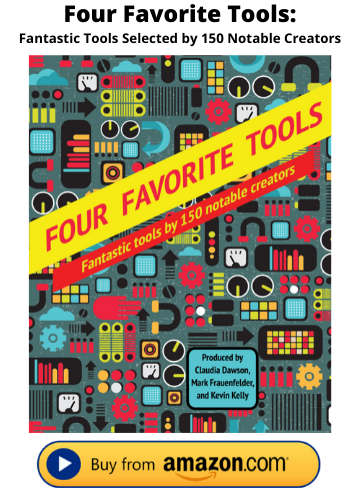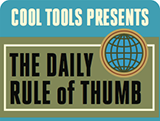Mowers
Tools for Possibilities: issue no. 161
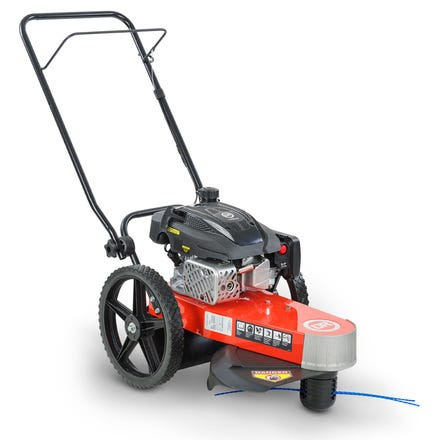
Lawn mower, weed whacker hybrid
Twenty years ago when I moved from the city to the rural acreage I now inhabit, I started researching all kinds of tools. I came across a small ad for a strange-looking contraption called a DR Trimmer/Mower. Picture a rotary lawn mower with an oversize weed whacker instead of a blade, and you’ll have it. I ordered one and was VERY glad I did. Nothing else comes close in keeping vegetation under control, even in tight spots like under fences. If I could only have one yard-maintenance tool, this would be it, hands down. In a pinch, it can even serve as a conventional lawn mower.
My original DR served me faithfully, and in fact still works well though it’s showing its age. But recently the manufacturer made an offer I couldn’t refuse to us early adopters of the original, so I updated to this new model. It has a few nice refinements but isn’t fundamentally different from my 1992 model. Highly recommended for people with lots of weeds, grass, and even brambles to keep under control.
Tips: the optional bigger engine in the 8.75 model is nice but not essential. Electric start is an optional luxury; my engine starts easily with a pull cord. I don’t think the self-propelled option is worth the money and added weight and complexity (YMMV). Don’t be afraid to experiment with different cutting line sizes and types: the stock line lasts a long time but I don’t think cuts as well as Oregon’s Nylium Starline. — Rob Lewis
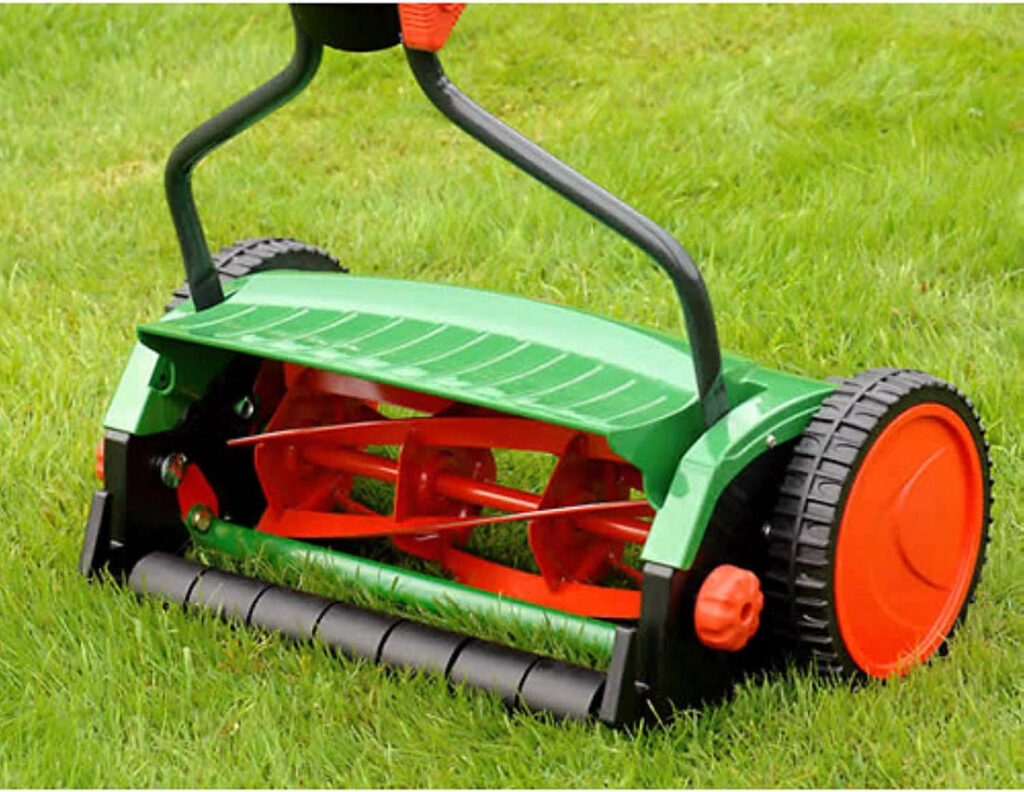
Easiest hand mower
When I first realized that my housemates were serious about me using a push mower to cut our yard, I was a little skeptical. Eventually I was won over by the environmental benefits and the sense of accomplishment that I received from using a “reel mower”. The first mower we purchased is literally called the “Prison reel mower” and I wouldn’t recommend it. The Brill Luxus 38 Reel Mower on the other hand is a sweet piece of engineering. It is very light at 17 pounds, weather resistant, and has variable height ranges. It feels good in your hands and seems very well designed. Now that I use it, I wouldn’t even consider buying a gas or electric powered mower for an average size yard. But let me warn you, using a manual mower is physically much harder, takes more time, and is very difficult if not impossible with tall grass (which means regular mowing). Whether you choose to look at that as an environmentally friendly and money-saving workout or a punishment is up to you. — Patrick Chen
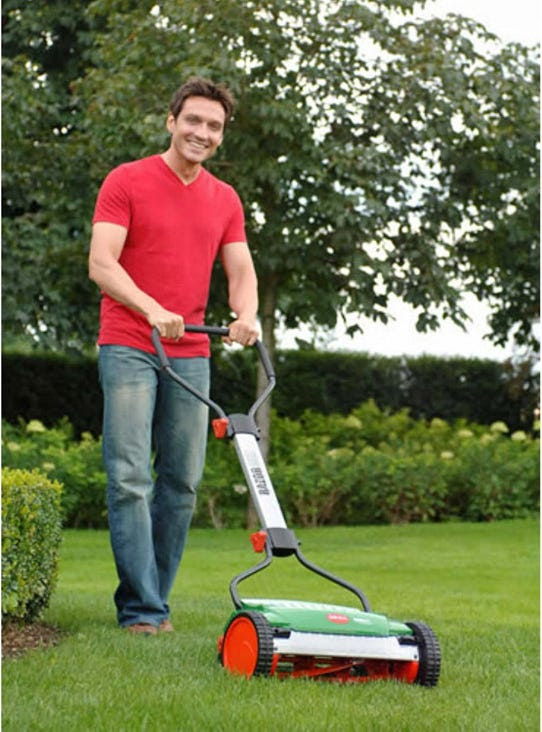
For the past 20 years I’ve cut my lawn with a hand reel mower. Reel mowers are wonderful — when they are new. The major drawback is not the mild workout, but keeping the blades sharp over time. You can’t sharpen the helical blades of a reel mower without a special jig (at least I can’t). Yet getting it sharpened at the shop will set you back $50 each time. That adds up real fast. And if a reel mower isn’t razor sharp (unlike a power one) cutting the grass does turn into punishment. That’s why the Brill is so interesting. Because its blades do not touch the cutter bar, it claims the average interval for resharpening is 8 years. I don’t know anyone who has had one that long (German-made Brill is big in Europe but new in the US), but in theory this could prolong the duration between sharpenings and change the equation for keeping a manual reel mower going. That is good news because I’ve found that I can cut our small irregular lawn just as fast, and with no more sweat, using a sharp push mower. — KK
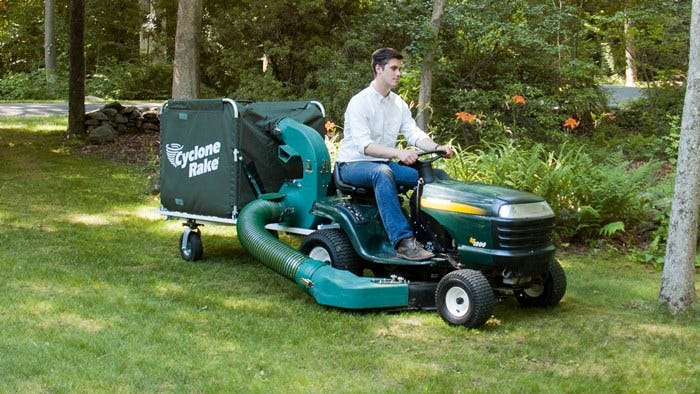
Leaf solution
I have about an acre of land with a lot of mature oak and hickory trees. They drop a lot of leaves each fall. I got the cyclone rake about 11-years ago, and it is just amazing. In one full day I can clean the entire property of leaves and be ready for winter. I’ll fill it 40 or so times throughout the day and emptying is reasonable. I make a leaf pile in a back area of the property for compost.
The 5-HP engine pulls the leaves from the mower discharge and grinds them further into small bits. One time using the attachment hose I sucked up a small block of wood with no damage to the impeller. However, there was a minor crack in the housing which I was able to patch with a short bolt and a couple of fender washers. Hickory nuts, sticks, pine cones and leaves get sucked up without issue.
Before it was several days of hard labor hauling load after load in a garden wagon, the cyclone rake was worth every penny. — John Dyer

The best electric trimmer
I have used several borrowed models of both electric and gas powered trimmers. The electric plug-in Stihl FSE 60 is my favorite by far. It is quiet and strong. The only concern is that when used continuously for half an hour or more, it gets very hot. I find that it is better to use it in shorter intervals.
It works better than other models and is easier to clean. While I have to wear earplugs when using it, it is far from the teeth-shaking monstrosities that disturb the neighborhood. I couldn’t see going to a gas powered trimmer unless I were very far away from an electric outlet. It is a bit more expensive than big box electric trimmers, but way better. The only reason to buy something like a Black & Decker or McCullough electric model is if you were only going to do a few light jobs one season and never use the thing again.
I was surprised that this dealer distributed model was so much better than the big-box online-marketed alternatives. In value, it’s one of my best tool purchases ever. —Bill Owens
I initially bought my Stihl FSE-60 reading a review at Consumer Search. The Stihl FSE-60 is not available at big boxes. They are only available at stores who function as local Stihl dealers. Presumably, this makes customer service a more personal experience and does a positive service to those smaller hardware stores trying to survive the big box onslaught. In any case, I bought mine a year ago in Kearny, NJ.
The balance is a bit weird. In your hands it has a bias to the rear, which is helpful, but necessary because it is powerful. VERY powerful. It uses a two-string configuration, and it’s a bump-feed. I found it to be efficient and effective. I may have only bumped it twice during a day’s use, whereas the Black and Decker it replaced was more bump than trim. It’s heavy, but not so heavy as to make it a terrible chore. It’s solid and quiet for a trimmer. Cleaning is easy after use as well. I suppose in comparison to the old B&D I had it’s superior, but I don’t do enough yard work to say definitively that it’s the best. I like it a lot, and I’m glad I bought it from a local dealer. — Christopher Wanko
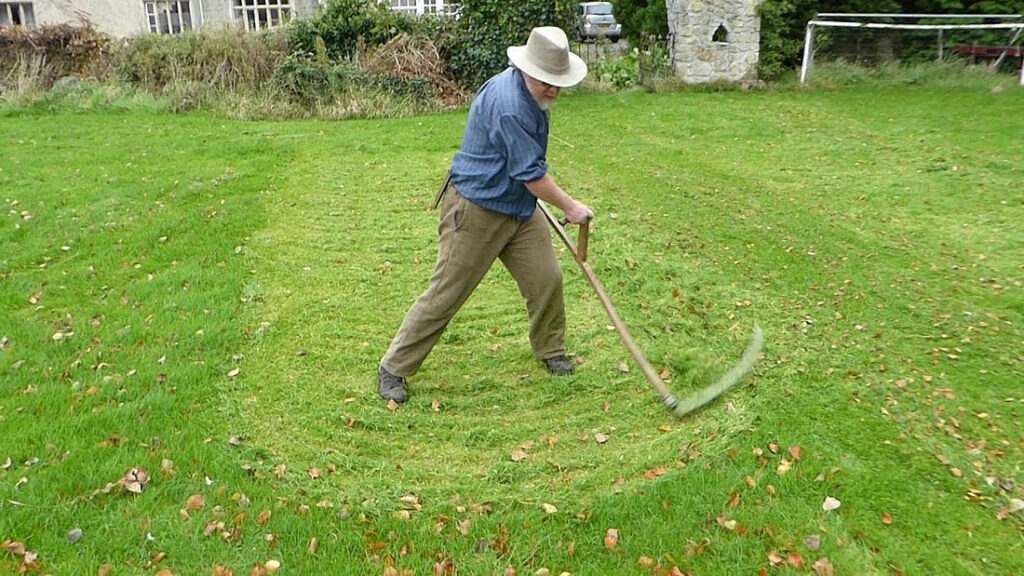
Most efficient mower
Light, sharp, ergonomic and quiet, this European scythe is not what you’ll find in your local hardware store. The handle (snath) is custom-fit, so you stand comfortably upright while ‘sweeping’ weeds and grass down with ease. Potential uses range from small-acreage hay cutting to weed and brush clearing in variable terrain. I use it as a weed-whacker replacement on my long driveway. You can talk to people and hear birds while ‘weed-whacking’. Pretty sweet. The price for a new one puts it up there with gas-powered weed-whackers, but I find the experience much more enjoyable. Honestly, I believe you can clear more area with less sweat using a European scythe than a powered string trimmer. The key is the light weight of the tool and the sharpness of the blade.
Most people are stunned when they see me take down grass or weed stalks with little more than a gentle nick from the blade. Furthermore, getting it custom fit will make it probably the most pleasant-to-use garden tool you’ll ever have. (I’m unusually tall, so maybe this impresses me more than it would a 5’9” man, for example). Here’s how a European scythe and string-trimmer weed whacker tally up to each other:
Scythe Pros
Scythe is lighter. Likely to be considerably more ergonomic. Quiet. Free from power source. Stalks intact, no pulverizing of plant-matter.
Scythe Cons
Must keep the blade *sharp* (The $170 kit comes with peening jig and whetstone). Sometimes the direction of approach makes a particular weed hard to cut. You won’t be able to pulverize a weed in between rocks or hard things. You must not let the blade hit hard things like rocks or metal.
For those considering a scythe, be sure to get the European style and help end this sad era that has had Americans breaking their backs with horribly un-ergonomic, heavy scythes. For instance, European blades weigh 15 oz, while American style ones weigh twice as much, at 30 oz! Besides the weight difference, the tang on the American style is not angled to help you cut the stalks. The blades are thicker and not as sharp, etc. You’ll find a lot more info on why and how to use this tool at Scythe Supply. — James Zimmerman
Once a week we’ll send out a page from Cool Tools: A Catalog of Possibilities. The tools might be outdated or obsolete, and the links to them may or may not work. We present these vintage recommendations as is because the possibilities they inspire are new. Sign up here to get Tools for Possibilities a week early in your inbox.
10/27/25



